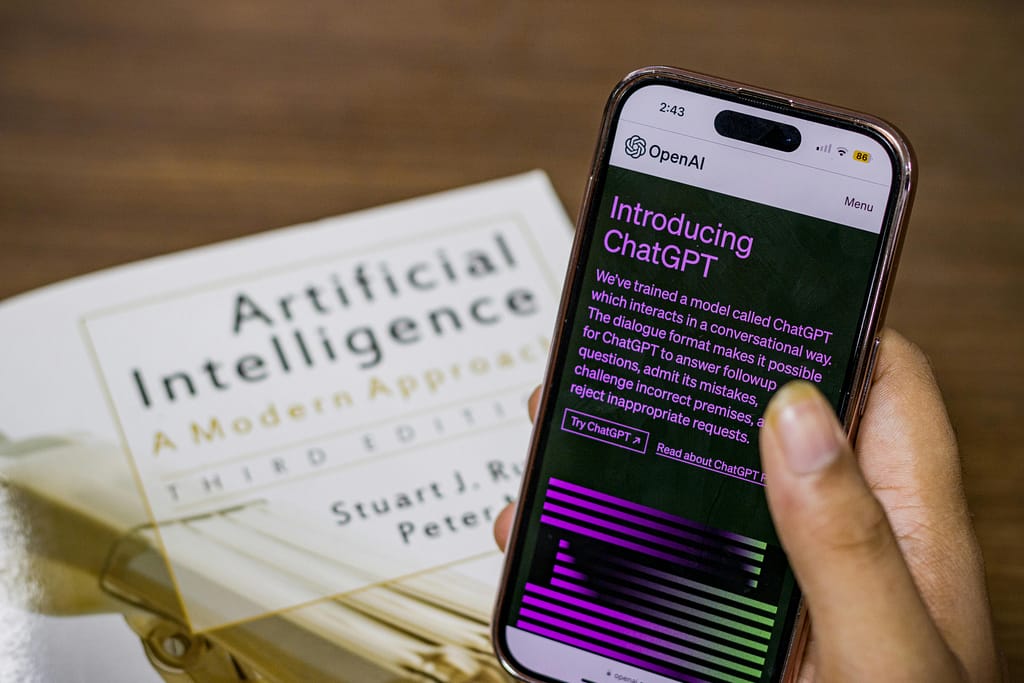Elevating User Experience: The AI Advantage
- January 31, 2024
- Posted by: Cheryl Li
- Category: AI for Customer Experience

In the digital realm, user experience (UX) stands as a pivotal element distinguishing successful platforms and products from the rest. Artificial Intelligence (AI) has emerged as a transformative force in enhancing UX, offering innovative solutions that make interactions more intuitive, personalized, and efficient. This blog post explores the multifaceted role of AI in improving user experience, shedding light on its applications, benefits, and the future trajectory of AI-driven UX innovations.
The Intersection of AI and User Experience
AI’s integration into UX design brings about a paradigm shift, moving beyond static, one-size-fits-all interfaces to dynamic, user-centric experiences. By leveraging AI, designers and developers can create systems that learn from and adapt to user behavior, preferences, and feedback in real-time, fostering a more engaging and satisfying user journey.
Key Areas Where AI Enhances UX
Personalization at Scale
AI excels in delivering personalized experiences to users by analyzing their interactions, preferences, and behavior. From customized content feeds on social media platforms to personalized product recommendations on e-commerce sites, AI-driven personalization ensures that users receive content and suggestions that are most relevant and appealing to them.
Predictive User Interfaces
Predictive UIs, powered by AI, anticipate the user’s next move based on past behavior, streamlining the user journey and reducing friction. Features like auto-complete in search bars and predictive text in messaging apps are prime examples of how AI can enhance usability and efficiency.
Conversational Interfaces and Chatbots

AI-powered conversational interfaces, including chatbots and virtual assistants, have revolutionized user interactions, offering a more natural and engaging way to communicate with systems. These AI agents can handle inquiries, perform tasks, and even offer personalized assistance, making the user experience more interactive and accessible.
Enhanced Accessibility
AI contributes significantly to making digital platforms more accessible to users with disabilities. Features like voice-to-text for users with mobility issues, image recognition for the visually impaired, and predictive text for those with cognitive disabilities are just a few examples of how AI is improving accessibility in digital UX.
Real-time Feedback and Optimization
AI systems can analyze user feedback and behavior in real-time, allowing designers and developers to continuously refine and optimize the UX. This iterative process ensures that digital products evolve in response to user needs and preferences, maintaining relevance and user satisfaction.
AI-Driven UX Design: Best Practices
To effectively leverage AI in UX design, it’s essential to follow best practices that prioritize user needs and ethical considerations:
- User-Centric Design: Always place the user at the center of the design process, ensuring that AI-driven features enhance, rather than complicate, the user experience.
- Transparency: Be transparent about how and why AI is being used, particularly in cases where user data is analyzed for personalization or other purposes.
- Privacy and Security: Prioritize user privacy and data security, implementing robust measures to protect sensitive information.
- Inclusivity: Design AI-driven UX with inclusivity in mind, ensuring that digital products are accessible and usable by a diverse user base.
- Continuous Testing and Feedback: Employ continuous testing and gather user feedback to refine AI-driven features, ensuring they meet user needs and expectations.
The Future of AI in UX
The future of AI in UX design is promising, with emerging technologies and approaches poised to further enhance user experiences:
- Emotion AI: Advances in emotion recognition technology will allow systems to understand and respond to user emotions, enabling more empathetic and responsive UX.
- Augmented Reality (AR) and Virtual Reality (VR): AI will play a crucial role in creating more immersive and interactive AR and VR experiences, opening new frontiers in UX design.
- Voice and Multimodal Interfaces: As voice interfaces become more sophisticated and multimodal interactions (combining voice, text, touch, etc.) gain traction, AI will be key in creating seamless and natural user experiences across various modalities.
Conclusion
AI’s role in enhancing user experience is undeniable, offering personalized, intuitive, and accessible interactions that meet the evolving expectations of users. By harnessing the power of AI, businesses and designers can create digital products that not only meet user needs but also delight and engage them in new and innovative ways. As AI technology continues to advance, its integration into UX design will undoubtedly lead to even more groundbreaking improvements, further elevating the digital user experience to new heights. In this journey towards AI-driven UX excellence, the focus must always remain on enhancing human-computer interaction in ways that enrich and simplify users’ lives.

